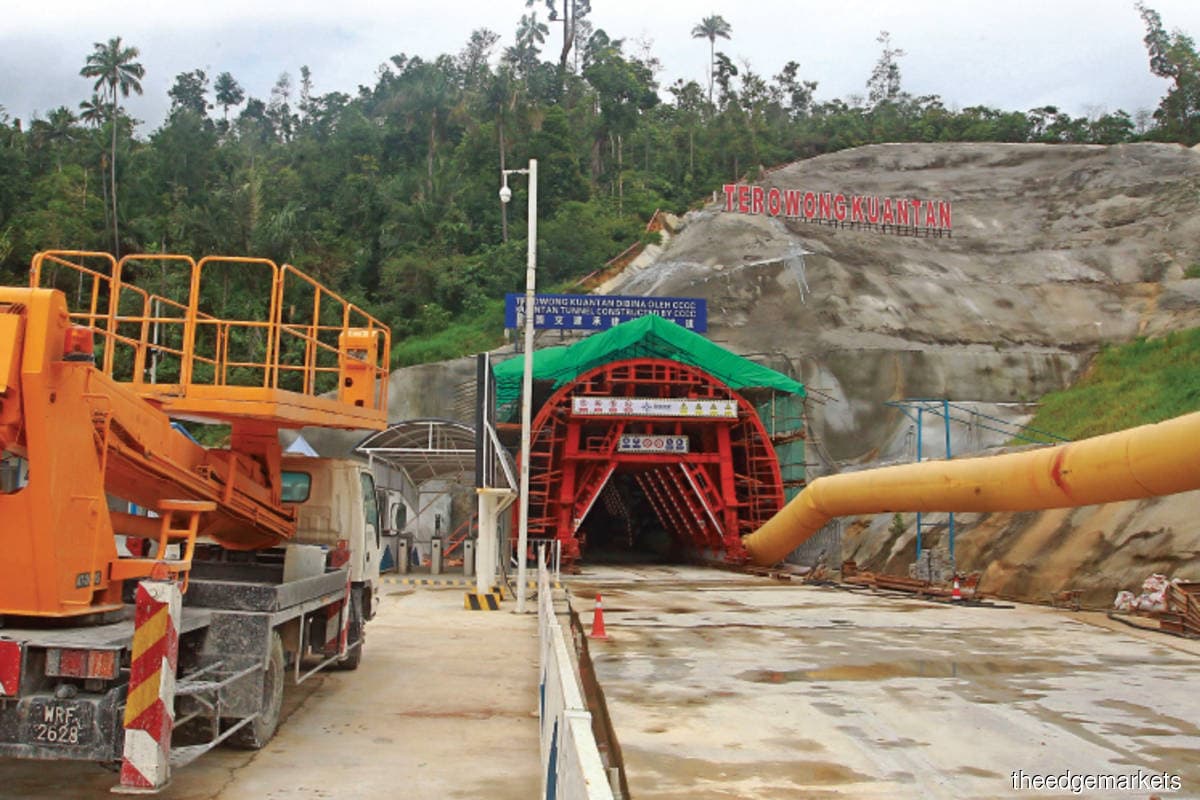
This article first appeared in The Edge Malaysia Weekly on July 6, 2020 - July 12, 2020
A plan is being mooted by a clutch of officials in the high levels of the Ministry of Transport (MoT) to change the East Coast Railway Line’s (ECRL) alignment yet again. The consideration is to revert to the original alignment that was proposed by the Barisan Nasional (BN) government, sources familiar with the matter tell The Edge.
It is understood that the proposal has been discussed in a national council meeting chaired by Prime Minister Tan Sri Muhyiddin Yassin recently.
“We do not know how serious the plan is or whether it will reach the Cabinet even, but we do know it is being talked about,” an official of Malaysia Rail Link Sdn Bhd (MRL) familiar with the discussions says on condition of anonymity. MRL is the project and asset owner of the ECRL, a wholly-owned subsidiary of the Minister of Finance Inc.
The Edge understands that the changes being mooted are mainly in Section C of the project, which is the portion of the railway track in the Klang Valley that connects to Port Klang.
The 690km-long ECRL project consists of three sections: Section A, which runs from Kota Bharu in Kelantan to Dungun in Terengganu; Section B, from Dungun to Mentakab in Pahang; and Section C, straddling Mentakab to Port Klang in Selangor.
Minister of Transport Datuk Seri Wee Ka Siong, who is also president of the Malaysian Chinese Association (MCA), is understood to have brought up the proposal to restore the ECRL to its old alignment.
When contacted, Wee says the government is evaluating the options for the alignment, adding that the new one suggested by the then chairman of the Council of Eminent Persons Tun Daim Zainuddin was a not fixed alignment but a proposal.
This is because there are still issues to be considered, he says, including how the proposed alignment will affect the land it will pass through.
The original alignment by the BN government would have cost at least RM20 billion more than what was planned by the Pakatan Harapan (PH) government, as the former involves more tunnelling works — for instance, the construction of a tunnel from Genting Sempah in Bentong, Pahang, to Selangor, which will cost more than RM8 billion.
There is also a question of economic benefit. The original alignment planned by the BN government will have a stop at Gombak, where there is a northbound terminal. The railway track under the BN proposal was supposed to end at Jalan Kastam, adjacent to a KTM Komuter station, and would not pass through Putrajaya and Port Klang.
It is worth noting that Bentong, Pahang, where the tunnelling works are supposed to take place, is the hometown of former MCA deputy president Tan Sri Chan Kong Choy, and constituency of former MCA president Datuk Seri Liow Tiong Lai, who is also former minister of health. Suffice it to say, the change of alignment to have the railway track going through Bentong will benefit the development of the town.
The current alignment for the ECRL, which links Kota Bharu to Port Klang, is slated to cost RM44 billion, or RM64 million per km. On the other hand, the original alignment was estimated to cost RM65.5 billion, or RM95 million per km, according to the BN government then.
Former minister of finance Lim Guan Eng had, however, pegged the actual costs at RM81 billion for the alignment proposed by the BN government, taking into account the interest expenses of the massive loans taken up to fund the infrastructure project.
The original ECRL project also included 24 stations, including Malaysia-Thailand border town Pengkalan Kubor and Wakaf Bharu, which are in Kelantan.
Meanwhile, PH reduced the number of stations to 20, and sought to reduce costs by avoiding a tunnel through the Titiwangsa mountain range by realigning the railway track via Seremban, the constituency of former transport minister Anthony Loke Siew Fook, before it headed off to Putrajaya and Port Klang.
Daim had renegotiated the terms of the contract with the main contractor China Communications Construction Co Ltd, a Chinese government-controlled outfit.
The Chinese interest in the ECRL stems from its being a key project in China’s Belt and Road Initiative. There were also grand plans to link Port Klang in the west to Kuantan Port in the east, creating a land bridge bypassing Singapore.
Another change made by the PH government was to end the line at Kuantan so that the ECRL meets the main objective of linking the two ports on the east and west coasts of the peninsula, instead of the earlier version that extends the rail to Kelantan in the north.
The original plan by the BN government was for the ECRL to connect Kota Bharu to Port Klang in four hours, but the PH government’s reroute extended it to six hours, albeit cutting costs and increasing the economic impact of the project.
Read also:
Transport ministry confirms plan to revert to original ECRL alignment
ECRL Pahang-Port Klang section review not yet finalised, says MoT
Wee: ECRL to complement existing railway network
Save by subscribing to us for your print and/or digital copy.
P/S: The Edge is also available on Apple's AppStore and Androids' Google Play.
